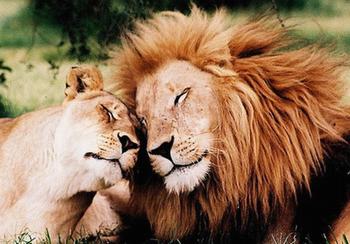
LEIDEN, The Netherlands, August 11, 2016 (ENS) – Lions in West and Central Africa form a unique group, only distantly related to lions in East and Southern Africa, biologists at Leiden University have confirmed.
For their study, the researchers gathered a genetic dataset of lion populations covering 22 countries.
This included samples from each remaining lion population in West and Central Africa, a region where lions and other wildlife are rapidly declining as a consequence of the increasing human population.

The researchers managed to gather all the information by teaming up with other people in the field and local conservationists.
Based on the genetic data, it was estimated that the split between the two major lion groups must have occurred 300,000 years ago.
To explain what happened in their evolution, the researchers reconstructed African climatological history.
They found that periodic expansions of the rainforest and the desert drove lions into isolated pockets of suitable habitat, where the different genetic lineages originated that can still be observed today.
A general pattern is emerging that shows that many large African savannah mammals show very similar arrangements, with unique lineages in West and Central Africa.
Large mammals such as giraffe, buffalo, hartebeest, cheetah and spotted hyena also are affected.
The strong declines in wildlife populations in large parts of West and Central Africa are a reason for major concern. The fact that this region seems to harbor a lot of unique genetic lineages makes conservation in the area extremely important.

A delegation from Leiden University will participate in the IUCN World Conservation Congress in September 2016, and will lead a Side Event that aims to establish a Species Action Plan for West and Central Africa.
The researchers hope that this will facilitate coordination and funding of projects in the region.
The research was published on August 4 in “Scientific Report,” just ahead of International Lion Day, a project of Big Cat Rescue, a Florida-based nonprofit that provides a permanent home for unwanted, abused and neglected exotic cats.
Their 67-acre sanctuary in Tampa, Florida houses about 100 lions, tigers, leopards, bobcats and other species.
Founded in 1992, Big Cat Rescue is one of the largest big cat sanctuaries in the world and is accredited by The Global Federation of Sanctuaries.
Copyright Environment News Service (ENS) 2016. All rights reserved.
© 2016, Environment News Service. All rights reserved. Content may be quoted only with proper attribution and a direct link to the original article. Full reproduction is prohibited.
